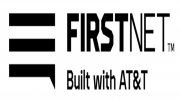We have written in the past about how communications centers operate within this new world of FirstNet in FirstNet And The Public Safety Communications Center. There are those in our profession who think that the NG ESInet should be integrated into the FirstNet network or more specifically want to use their state ESInet networks as part of FirstNet. In our view this may not be such a good thing, for many reasons. We don’t want to get into the weeds on some of these issues but everyone needs to understand that most 911 networks are regulated at several levels, whereas FirstNet is a contracted network AT&T is providing to FirstNet. For those involved at administrative levels you most likely would agree that commingling these two would be an administrative nightmare and not good public policy.
Another concern. Is it good to have one network? Our point of view is no, and here is why. Do I want all inbound 911 calls on the same network used to connect to the fields units? If one goes down it all goes down. Okay, just a minute, some of you are saying that’s why you build redundant networks. That may be true however, how many time have you heard people say they have full redundancy and that they would never lose their network. Only to hear it all came crashing down because of one small item no one considered.
Next concern. What impact will this have on CAD (computer aided dispatch) systems. If the vision is to move data directly to field units how does it get captured by CAD system? Currently CAD systems use specific data fields, have different storage methods and specific ways it communicates with first responder terminal. Will CAD vendors add new fields for such items as “streaming video attached,” “still video attached?” Will all current and future data fields align? Last but not least, when CAD systems are modified what will be the expense?
One of the main reason some support commingling the networks is that data will need to be transmitted from the caller directly to the first responder. The idea being that the first responder should see the real-time video from the caller. Should they, see it? Does the first line sheriff or police officer responding to an emergency need to see a video as he or she is racing code-3? We think not.
However, does the right hand seat of a paramedic unit need to see live video of the shooting victim? Maybe so. Likewise, does the fire officer, again in the right hand seat need to see live video of a fire scene? Maybe so. But again does the ability of that individual while responding lose concentration when they normally are looking for threats to assist the driver or reviewing pre-arrival plans? Does all this create a risk that government agencies want to take?
What needs to be considered and what some seem to be forgetting are those telecommunicators who in the future will be multimedia telecommunicators. They currently are experts at sifting through the massive amounts of information they receive and at knowing what is appropriate to be passed on to the responding units. They are the experts. They triage information every day for every call. We believe it is reasonable to assume that there will be multiple streams of video being sent and what determines which ones go to the responding units? The “what” is really a who. Those highly trained and skilled telecommunicators.
So, there is plenty to consider when it comes to ESInet, FirstNet, and just how they should be used.
Here is something new we would like to do at ATFN. Most of our readership are experts. They are managers, telecommunicators, law enforcement, fire and EMS. We’d like you to tell us if you think one network is a good idea. Below is a link to a poll where you can vote on whether commingling inbound ESInet traffic with outbound FirstNet traffic is a good idea. Please take the time to respond.
Thanks,
Editorial Staff
AllThingsFirstNet.com
As a final thought it would seem to us that whether you agree or disagree it is a good idea that there needs to be work done in governance as to when and how the data will move and be shared to comply with all the state and federal regulations. Additionally, there needs to be work done on data standards to ensure all data moving down the network, connecting to CAD and storage of that data is consistent.
Now to our survey….





Be the first to comment on "FirstNet and ESInet Commingled, Maybe Not Such a Good Idea"